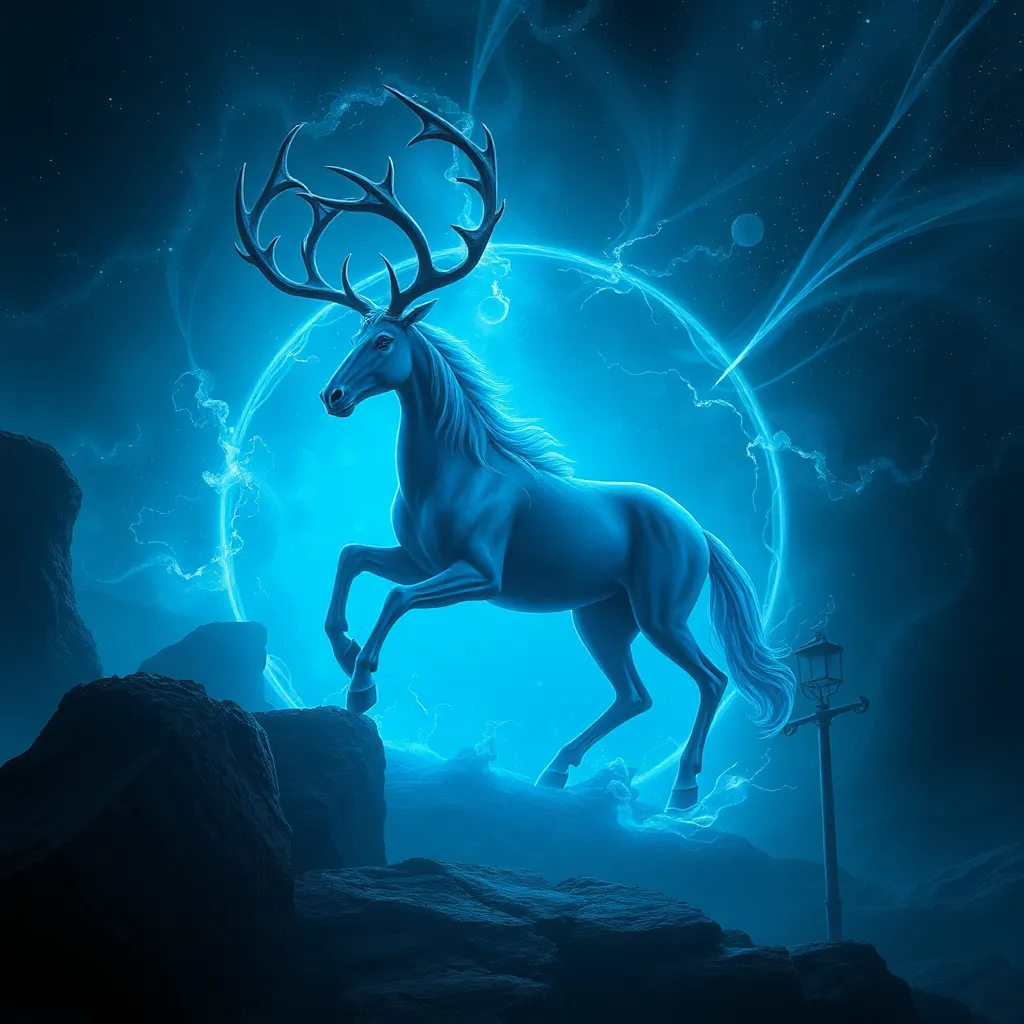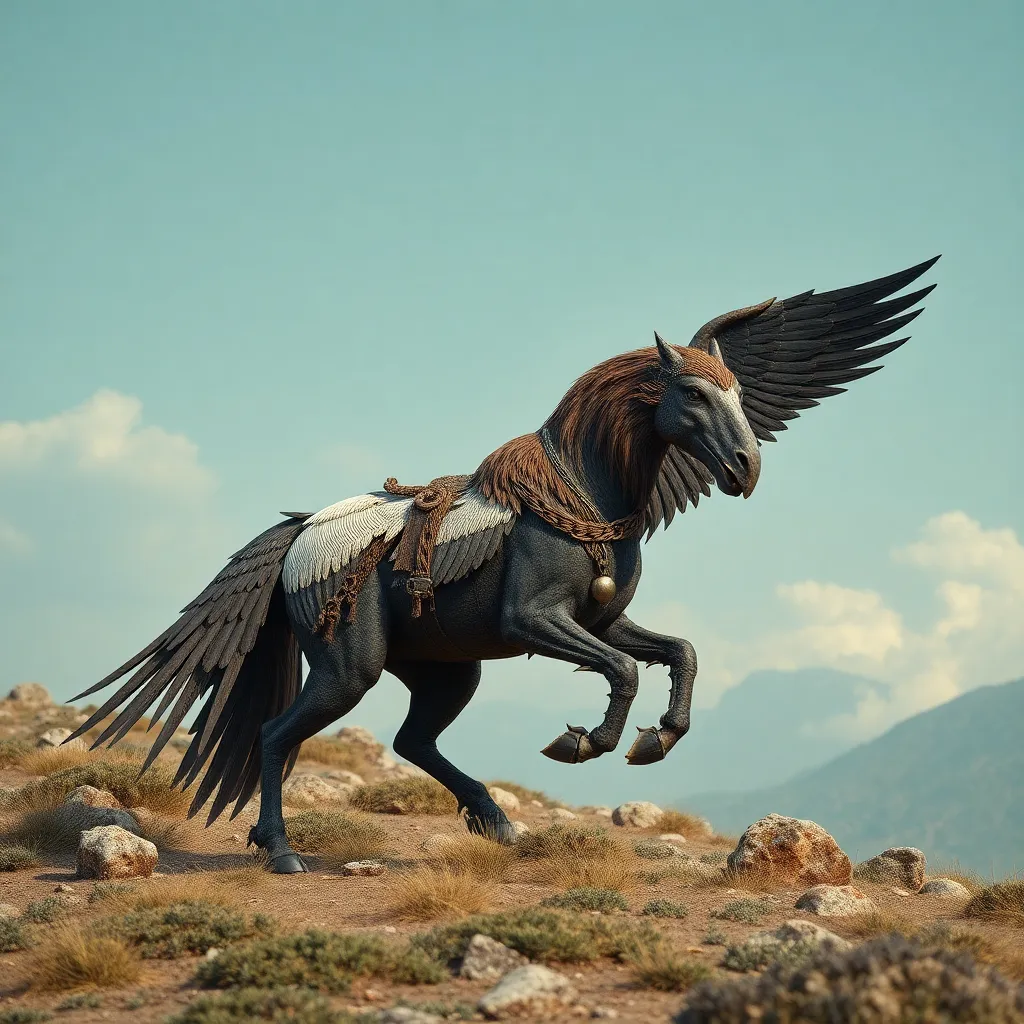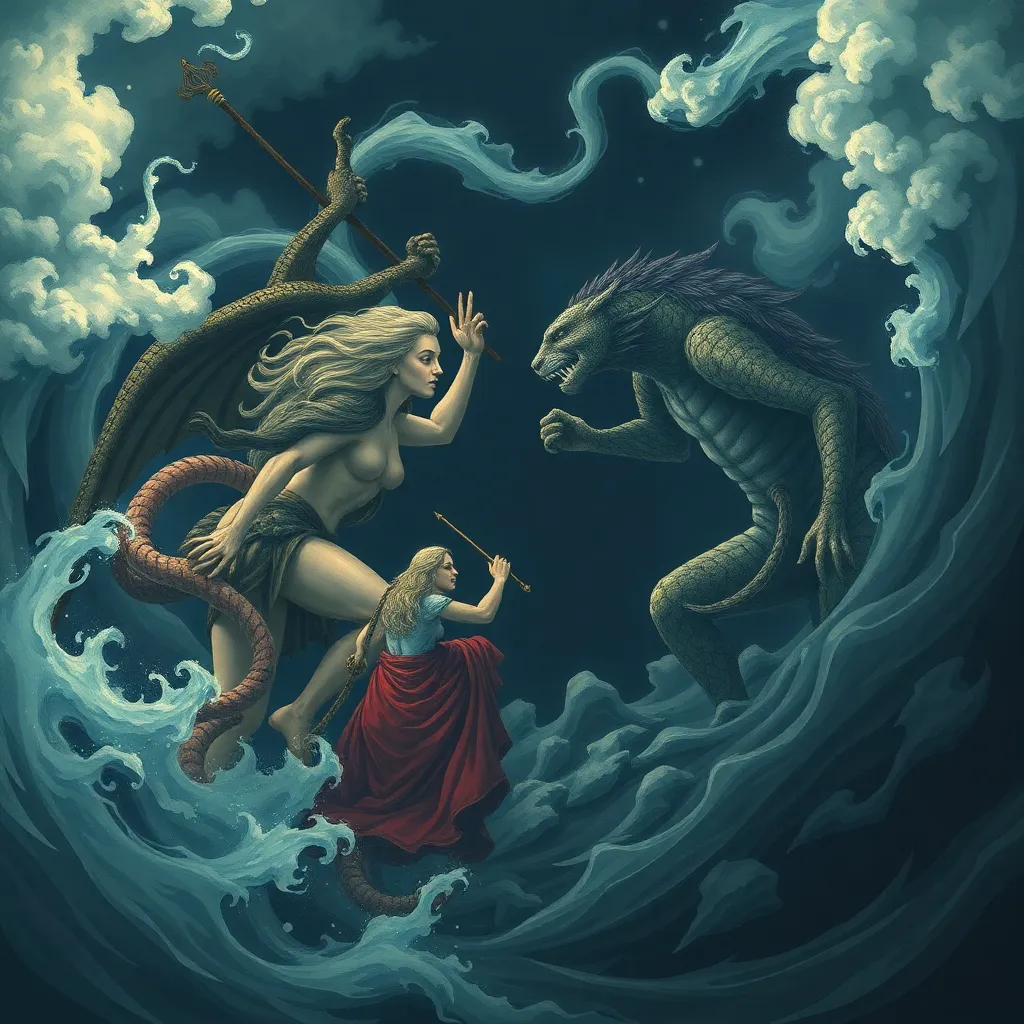Sleipnir Tales: The Greek Myths of the Underworld and the Afterlife
I. Introduction
Sleipnir, the eight-legged horse of Norse mythology, often symbolizes the connection between different realms, particularly the mortal world and the realms beyond. This article will explore how such a symbol resonates with the rich tapestry of Greek mythology, especially in relation to the Underworld and the afterlife. The Greek myths are replete with tales that delve into themes of death, judgment, and the eternal fate of souls, providing a profound understanding of human existence and mortality. Through this exploration, we aim to uncover key myths and their significance in the broader context of life, death, and the journey beyond.
II. The Concept of the Underworld in Greek Mythology
In Greek mythology, the Underworld, known as Hades, is not merely a place of gloom but a complex realm where the souls of the deceased dwell. Hades is ruled by the god of the same name, who, alongside his wife Persephone, governs this shadowy domain. The Underworld is divided into several regions, each serving a specific purpose in the afterlife journey.
- Hades: The primary realm where souls reside, often depicted as a dark and dreary place.
- Elysium: A paradise for the blessed, where heroes and virtuous souls enjoy eternal happiness.
- Tartarus: The deep abyss used for punishment and containment of the wicked.
Key figures associated with the Underworld include:
- Hades: The god who oversees the Underworld.
- Persephone: The queen of the Underworld, whose story is intricately linked to the seasons.
- Charon: The ferryman who transports souls across the River Styx.
The Underworld holds significant importance in Greek belief systems, representing both the end of life and the continuation of existence in another form. It embodies the Greeks’ understanding of mortality and the moral consequences of one’s actions in life.
III. Journey of the Soul: From Life to the Afterlife
The journey of the soul begins with death, a transition marked by several steps that lead to the Underworld. Upon dying, the soul is believed to leave the body and embark on a voyage to the afterlife.
Charon, the ghostly ferryman, plays a crucial role in this journey. He requires payment for passage across the River Styx, usually in the form of an obol, a small coin placed in the deceased’s mouth as a means to ensure they can afford the fare. Without this payment, souls are said to wander the shores of the Styx for eternity.
Once across, the souls face judgment by three judges: Minos, Rhadamanthus, and Aeacus. These figures assess the deeds of the deceased during their lifetime, determining their fate in the afterlife.
IV. Notable Myths Involving the Underworld
Several myths illustrate the complexities of the Underworld and the experiences of its inhabitants:
A. The Myth of Orpheus and Eurydice
One of the most poignant stories is that of Orpheus, a gifted musician whose wife, Eurydice, dies shortly after their wedding. Overcome with grief, Orpheus descends into the Underworld, charming Hades and Persephone with his music. They agree to let Eurydice return to the living world on one condition: Orpheus must not look back at her until they reach the surface. Tragically, he falters at the last moment, and Eurydice is lost to him forever, illustrating the themes of love, loss, and the finality of death.
B. The Story of Persephone’s Abduction
Persephone’s abduction by Hades is another significant myth. While picking flowers in a meadow, she is taken to the Underworld, causing her mother Demeter, the goddess of the harvest, to mourn deeply. This myth explains the changing of the seasons, as Demeter’s grief results in barren winters when Persephone is in Hades and the flourishing of spring when she returns. It encapsulates the cyclical nature of life and death.
C. The Twelve Labors of Hercules and the Descent into Hades
Hercules, in his Twelve Labors, is tasked with capturing Cerberus, the three-headed dog guarding the gates of Hades. This descent into the Underworld not only tests Hercules’s strength but also highlights the hero’s struggle against death and the inevitability of fate, showcasing the heroic ideal in Greek culture.
V. Themes of Redemption and Punishment
Greek mythology presents a duality of themes concerning the afterlife: redemption and punishment.
A. The Concept of Elysium and Eternal Bliss
Elysium, also known as the Elysian Fields, represents the ultimate reward for virtuous souls. Here, the blessed experience eternal bliss, free from pain and suffering, emphasizing the Greek belief in the potential for redemption after death.
B. Tartarus: The Realm of Punishment
In stark contrast, Tartarus serves as the place of punishment for the wicked. Souls condemned to Tartarus face eternal torment, a reflection of the moral consequences of their earthly actions. This duality reinforces the importance of living a virtuous life.
C. The Implications of These Themes on Ancient Greek Morality
The narratives surrounding the Underworld influence ancient Greek morality by establishing a clear connection between one’s actions in life and their consequences in the afterlife. Such tales served as cautionary lessons for the living, shaping societal values and beliefs.
VI. Symbolism of Sleipnir in Relation to the Underworld
Sleipnir, as a bridge between worlds, bears significant symbolism that can be compared to aspects of Greek mythology.
A. Sleipnir as a Bridge Between Worlds (Norse Influence)
Sleipnir connects the earthly realm with the divine and the underworld, much like Charon’s ferry. This representation highlights the interconnectedness of life and death across different mythologies.
B. Symbolism of Horses in Mythology and Their Connection to the Afterlife
In many cultures, horses symbolize freedom, nobility, and the journey of the soul. In Greek mythology, horses are often associated with gods and heroes, further linking them to themes of the afterlife and the journey beyond.
C. Comparative Analysis of Sleipnir and Greek Mythological Creatures
Comparing Sleipnir to creatures like Pegasus and Cerberus reveals a shared motif of the horse as a guide or guardian in the afterlife, illustrating universal themes of transition and protection.
VII. Cultural Legacy and Influence
The myths of the Greek Underworld have profoundly influenced literature, art, and culture throughout history.
A. Impact of Greek Myths on Literature and Art
From ancient tragedies to modern novels, the exploration of the Underworld has inspired countless works of art, reflecting humanity’s fascination with death and the afterlife.
B. Modern Interpretations and Adaptations of These Myths
Contemporary adaptations, including films, books, and plays, often revisit these themes, highlighting their relevance in today’s society. The archetypes of the Underworld continue to resonate with audiences, emphasizing the timeless nature of these narratives.
C. The Continuing Relevance of the Underworld Themes in Contemporary Culture
Themes of mortality, the afterlife, and moral consequence remain prevalent in modern discussions, reflecting a collective human concern that transcends time and culture.
VIII. Conclusion
The myths surrounding the Greek Underworld offer profound insights into ancient beliefs about life, death, and what lies beyond. Through the exploration of these narratives, we see the enduring fascination with the afterlife and the moral implications of human actions. The connection between Sleipnir and the concepts of the Underworld further emphasizes the universal nature of these themes across different mythologies. Ultimately, these stories serve not only as reflections of ancient beliefs but also as timeless meditations on human existence and the mysteries of mortality.



